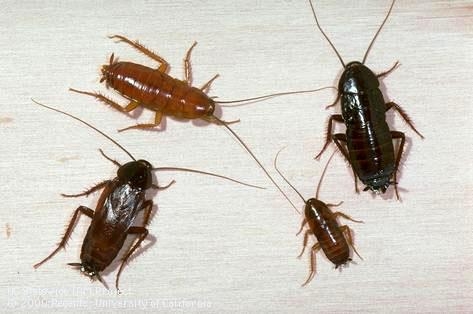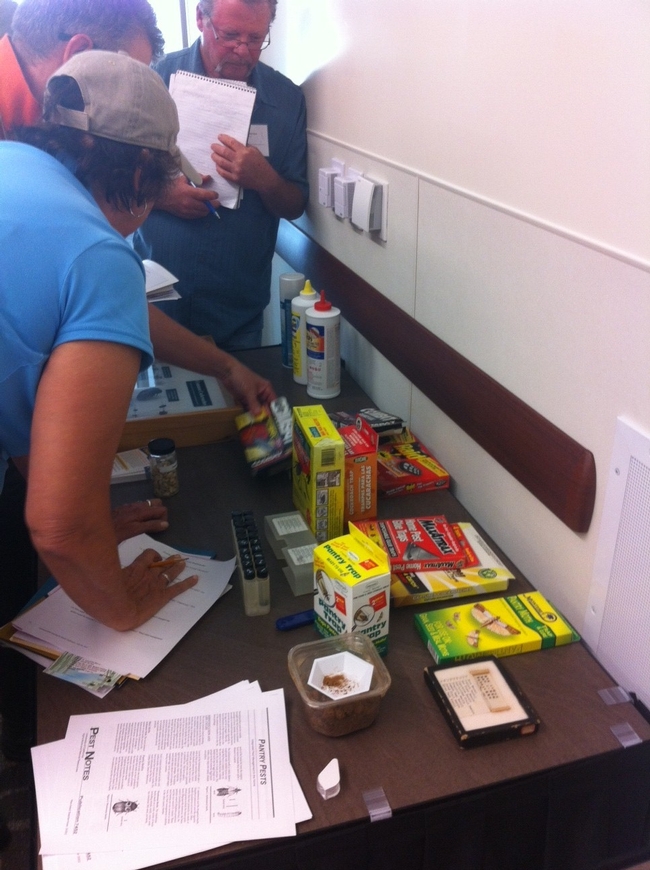UC Master Gardener volunteers know household pests!
It's well known that the UC Master Gardener Program produces dedicated volunteers who are extremely knowledgeable about home horticulture and gardening. UC Master Gardener volunteers; especially those working at help desks, hotlines, and farmers markets, respond to thousands of requests each year, extending information and resources to California's residents that help them maintain landscapes, grow healthy food, and manage pests using the principles of integrated pest management (IPM).
Pests don't disappear at the front door, however: there are plenty of significant pests threatening our households, structures, and communities. In fact, residents in urban counties may have more need for information and resources associated with household pest IPM than for landscape and garden IPM. Even rural counties are filled with homes that may be infested by key urban pests such as ants, cockroaches, bed bugs, flies, termites, pantry pests, and rodents.
UC Master Gardener Programs have seen increasing numbers and rates of requests for information about these pests. Using the principles of IPM, household pests can be effectively managed while minimizing negative impacts to our communities and the environment. For instance, many unnecessary pesticide applications are made in urban environments, leading to pesticide exposure events, pesticide resistance issues, and environmental contamination, especially of urban surface water systems. In many cases, pests could have been managed using preventive or nonchemical tactics.
Whether in the home or in the garden, IPM is one of the key knowledge areas in which UC Master Gardener volunteers receive training. Using the UC IPM website and its materials, such as Pest Notes and Quick Tips, UC Master Gardeners are able to help answer household pest requests. Even so, volunteers familiar with plant ecosystems may not always feel confident when addressing pest problems in the home. Luckily, an advanced training opportunity exists for UC Master Gardener volunteers who would like to increase their proficiency in household IPM.
A continuing education module, entitled Advanced IPM Training for UC Master Gardeners: Household Pests, was developed by Dr. Andrew Sutherland, Urban IPM Advisor in the San Francisco Bay Area. This advanced training has been provided several times for UC Master Gardeners at in-person hands-on workshops, but it is also available online within UC IPM's IPM Resources for UC Master Gardeners web portal.
The module includes a PowerPoint presentation, word-for-word script, instructions on hands-on exercises associated with the presentation, and handouts providing detailed information about the pests covered. Help Desk leaders and other UC Master Gardener volunteers can use these materials to deliver the modules to other volunteers using a train-the-trainer model. The module can also be delivered to residential clientele directly. Pests discussed include: ants, bed bugs, cockroaches, pantry pests, termites, and other wood-destroying insects.
We encourage you to take advantage of this unique training opportunity, and become a local expert on household pests. As always, UC ANR Advisors like Dr. Sutherland are available to answer difficult questions and to provide more in-depth training, but this module can certainly help you build confidence and prepare you for that next bed bug request (you know it's coming!).
The updated continuing education module can be found at the following URL: http://ipm.ucanr.edu/FAQ/mghousehold.html
For questions about this Household Pests module, please contact Dr. Andrew Sutherland
Comments:
UC IPM has some great information on silverfish management, here: http://ipm.ucanr.edu/PMG/PESTNOTES/pn7475.html.
Regarding creating a pollinator habitat the UC Master Gardener Program in San Diego would be a great resource to help get you started. Here is the website: http://ucanr.edu/sites/sdmastergardeners/.
Happy gardening!
Melissa







Second: I have a lawn in front (not watering it so it looks terrible) and a patch of dirt in back i would love to transform into a place for butterflies and birds. Where to start?
Posted by Viola Roth on September 25, 2017 at 7:54 PM